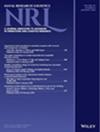供应链中断模型:批判性回顾
IF 2.1
4区 管理学
Q3 OPERATIONS RESEARCH & MANAGEMENT SCIENCE
引用次数: 26
摘要
受供应链中断影响的企业报告了不利后果和巨大的财务损失。在供应链风险管理的研究领域中,研究人员使用仿真模型和算法来分析中断风险及其对供应链的潜在影响。供应链中断风险模型侧重于量化和评估中断风险的方法,研究它们之间的相互依赖关系,并探索风险在网络中传播时的动态行为。到目前为止,还没有一篇综述涵盖和评估了专注于这些特定网络相关风险特征的定量决策模型。本文给出了供应链中断风险模型的定义,并在文献需求的基础上分析了现有的方法。其目的是构建现有的方法,揭示其缺点,并指导未来的研究工作,以系统地改进前瞻性模型。该分析揭示了供应链模型中中断风险的动态和相互依赖方面的同时集成以及它们在网络中的传播方面的潜在改进。应支持供应链风险管理框架的更多流程步骤,并应纳入更多缓解战略,以扩大模型的范围和用途。本文章由计算机程序翻译,如有差异,请以英文原文为准。
Supply Chain Disruption Models: A Critical Review
Enterprises affected by supply chain disruptions have reported adverse consequences and dramatic financial losses. Within the research area of supply chain risk management, researchers use simulation models and algorithms to analyze disruption risks and their potential effects on the supply chain. Supply chain disruption risk models focus on ways to quantify and assess disruption risks, study interdependencies between them, and explore the dynamic behavior of risks as they propagate through the network. So far, no review has covered and evaluated quantitative decision models which focus on these specific network-related risk characteristics. This paper derives a definition for supply chain disruption risk models and analyzes existing approaches on the basis of requirements derived from the literature. Its aims are to structure existing approaches, reveal their shortcomings, and guide future research efforts to improve prospective models systematically. This analysis reveals potential improvements regarding the simultaneous integration of dynamic and interdependent aspects of disruption risks in the supply chain model as well as their propagation through the network. More process steps of a supply chain risk management framework should be supported and more mitigation strategies should be incorporated to expand the scope and usefulness of the models.
求助全文
通过发布文献求助,成功后即可免费获取论文全文。
去求助
来源期刊

Naval Research Logistics
管理科学-运筹学与管理科学
CiteScore
4.20
自引率
4.30%
发文量
47
审稿时长
8 months
期刊介绍:
Submissions that are most appropriate for NRL are papers addressing modeling and analysis of problems motivated by real-world applications; major methodological advances in operations research and applied statistics; and expository or survey pieces of lasting value. Areas represented include (but are not limited to) probability, statistics, simulation, optimization, game theory, quality, scheduling, reliability, maintenance, supply chain, decision analysis, and combat models. Special issues devoted to a single topic are published occasionally, and proposals for special issues are welcomed by the Editorial Board.
 求助内容:
求助内容: 应助结果提醒方式:
应助结果提醒方式:


